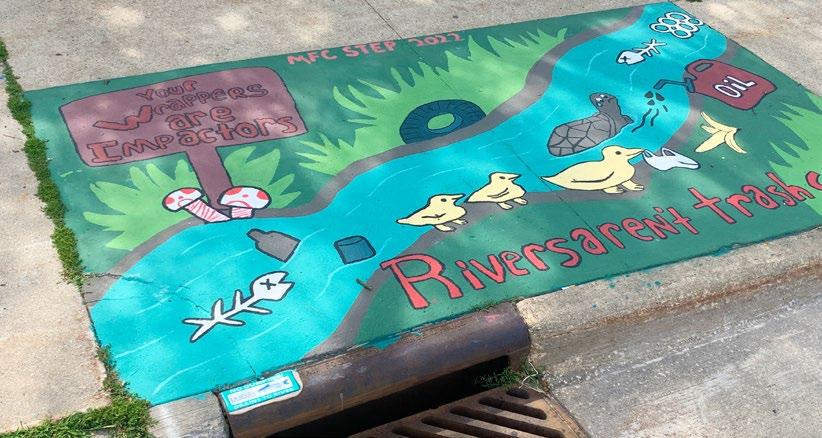
2 minute read
The Difference in Drains
Storm sewers, sanitary sewers, and what they do for you
The City of Dubuque has two separate underground collection systems: a stormwater management system for rainwater runoff and snow and ice melt, and a sanitary sewer system for wastewater. The two systems are not connected and serve different purposes, but both help maintain a safe and sanitary environment for residents.
Advertisement
STORMWATER MANAGEMENT SYSTEM
The stormwater management system carries rainwater runoff and melting snow and ice from roofs, driveways, parking lots, and streets and channels it directly into streams, rivers, and other bodies of water.
Here’s how it works…
When it rains, water that flows over driveways, parking lots, roofs, compacted lawns, and other impervious surfaces is called “runoff.” Runoff flows along streets and across surfaces until it enters into “storm drain inlets.” Storm drain inlets are connected to “storm sewers” constructed under city streets. The water travels through the underground storm sewers until it eventually flows into streams and rivers without having been treated. The point at which the water leaves the storm sewer and enters the waterway is called an “outlet.”
The City currently manages 6,535 stormwater intakes, 153 miles of storm sewers, 473 stormwater outlets, and 1,974 stormwater manholes. The manholes provide access to the underground storm sewers for maintenance activities including routine inspections, removal of sediment and debris, and the reconstruction or repair of pipes and structures.
Dubuque’s stormwater management system also includes detention areas, permeable pavement, the restored Bee Branch Creek Greenway, flood gates, and pumping stations. This system is vital to preventing flooding, erosion, and stream channel degradation.
Stormwater management also aims to prevent water pollution. Runoff picks up pollution, such as chemicals, bacteria, sediment, and trash, and is carried untreated by gutters, open drainage ways, and storm sewers directly into local streams and rivers and, ultimately, the Mississippi River. This is why you should never put any kind of trash or hazardous waste down a storm inlet. For more information, visit www.cityofdubuque.org/ stormwater.
SANITARY SEWER COLLECTION SYSTEM
Sanitary sewers are separate from storm sewers. They carry wastewater from homes and businesses to wastewater treatment plants.
Here’s how it works…
When you flush the toilet, the water is carried away from your home through small pipes called “sewer laterals” to larger, City-owned pipes called “sewer mains.” Sewer laterals usually run below your home, under your yard, and under the street where they connect to sewer mains. From there, it travels through an intricate maze of underground pipes until it reaches the Water & Resource Recovery Center on Julien Dubuque Drive for processing before it returns to the environment.
Some pipes transport wastewater by way of gravity. Other pipes in low-lying areas use pumps to move wastewater to a higher elevation. These are called “force mains.” Sanitary sewers are accessed via manholes for maintenance and repair. Clean-outs are located on private properties to provide access to sewer laterals. If there is a blockage in the lateral between your home and the sewer main, it may be accessible via the clean-out.
The City currently manages 103 pump stations, and approximately 331 miles of sanitary sewer pipes ranging in size from 4 to 49 inches, which serve over 20,000 properties. This infrastructure is critical for the protection of public health and environment.










